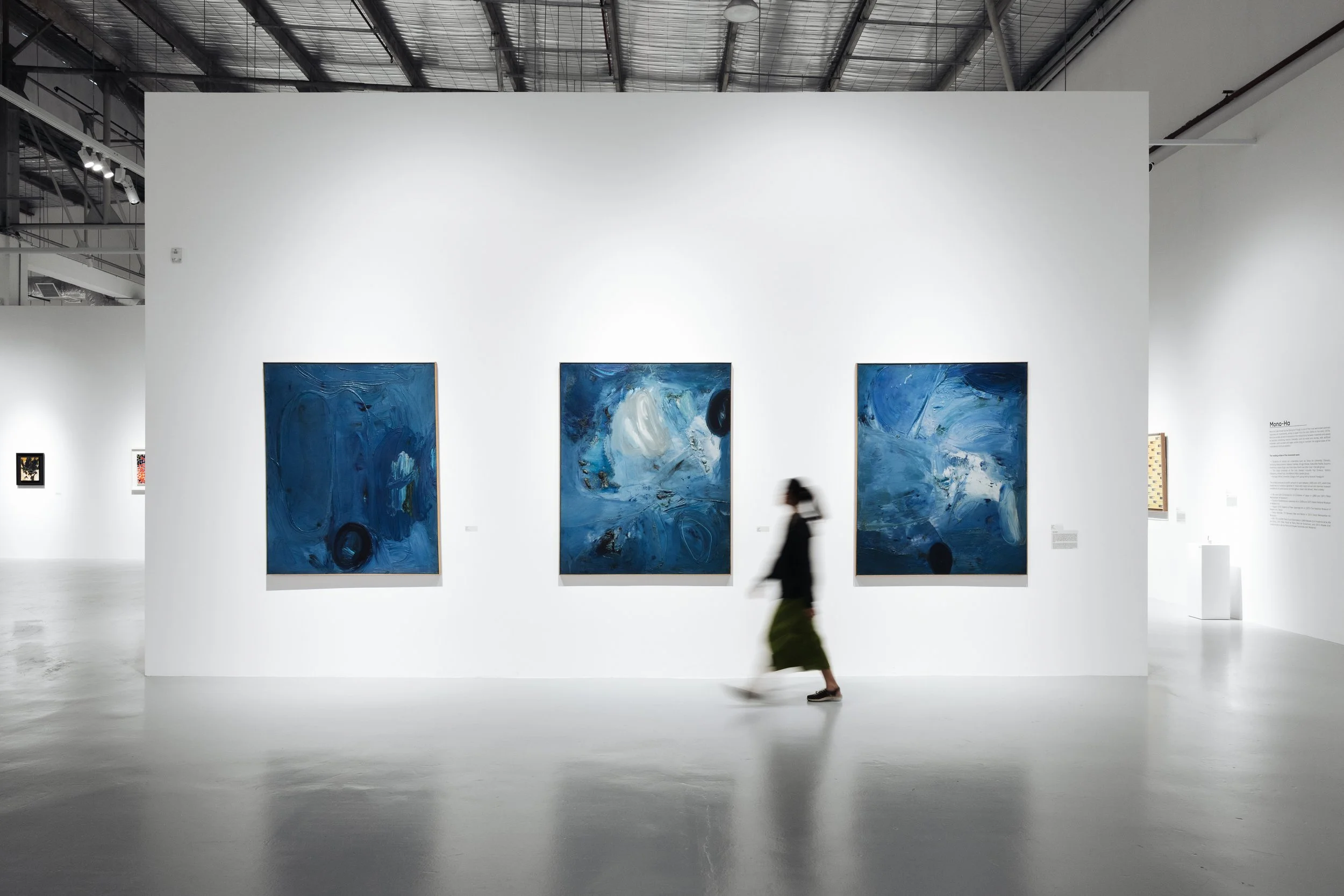Eruption
Japanese Post-War Avant-Garde
New Art Museum, Singapore
24 February, 2024 - 2 June, 2024
The first museum exhibition in Singapore to focus on Japanese art made during a pivotal period after World War II through the 1960s and 1970s, when Japan transformed itself from a war-torn nation into an international centre for arts, culture, and commerce. This will be a large-scale exhibition, reflecting the numerous multidisciplinary crossings that characterised the post-war Japanese avant-garde scene, the exhibition encompasses many mediums – including painting, sculpture, drawings, and kinetic art. Just as volcanic eruptions reshape the landscape, these artists have done the same to the artistic landscape of Japan. The title serves as an invitation to explore Japanese post-war art, rooted in a deep cultural background of tension and conflict.
Artists
Gutai
Jiro Yoshihara, Chiyu Uemae, Sadamasa Motonaga, Senkichiro Nasaka, Kazuo Shiraga, Yasuo Sumi, Tsuruko Yamazaki, Shozo Shimamoto, Aine Kinashi, Atsuko Tanaka, Michio Yoshihara, Tsuyoshi Maekawa, Takesada Matsutani, Yuko Nasaka, Shuji Mukai , Yutaka Matsuda,
Art Informel
Hisao Domoto, Toshimitsu Imai
Hi-Red Centre
Natsuyuki Nakanishi , Jiro Takamatsu, Genpei Akasegawa,
Mono-ha
Lee Ufan , Kishio Suga, Kazumi Nakamura-influenced bu Mono-ha practices
The other pioneers of Japanese post-war avant-garde
Takeo Yamaguchi, Toko Shinoda, Toshinobu Onosato, Yuichi Inoue, Yayoi Kusama, Ay-O, Tadaaki Kuwayama, Go Yayanagi, Yukihisa Isobe
Overview
ERUPTION: JAPANESE POST-WAR AVANT-GARDE will be divided into four rooms.
The first three rooms are categorised under specific Japanese art movements, while artists in the last room (Room 4) are categorised under the broad umbrella term ‘Post-war’ because they don’t identify with a specific Japanese art movement.
Room One
The first room features artists from the Gutai movement. Gutai was founded in 1954 by Jiro Yoshihara. The group name, which translates as ‘concreteness’ or ‘embodiment’, signifies Gutai’s central focus on the relationship between artist and materials. Yoshihara’s motto for the group was for them to ‘create something that was never seen before’ beyond the traditional concept of Japanese art. This section includes works by Jiro Yoshihara, Kazuo Shiraga, Shozo Shimamoto, Atsuko Tanaka, among others. Keep a lookout for Tanaka’s works, she is the only female artist in the Gutai group. Moreover, she is among the best known and most important artist of this influential group.
Room Two
The next room presents works from the Hi-Red Centre period. Founded in 1963 by Jiro Takamatsu, Genpei Akasegawa and Natsuyuki Nakanishi, this art movement stood out the most among other anti-art movement during the early 1960s. The group’s aim was to create happenings and events that were socially reflective, anti-establishment, and anti-commercial. Akasegawa’s famous 1000-yen note will be on display in the exhibition.
The exhibition next focuses on the Mono-ha movement. Also known as the ‘School of Things’, the Mono-ha movement is one of the most well-known post-war Japanese art movements, active in Japan from the late 1960s to the early 1970s. Mono-ha artists aimed to reconstruct the relationship between materials and space by typically combining organic and industrial materials. This group included Kishio Suga, Kazumi Nakamura, and Lee Ufan, the group’s strongest theoretical voice, all of whom are represented in the exhibition.
Room Three
The final room focuses on artists who do not fit into any group but contributed to the post-war Japanese art scene. Some artists in this category were also based in Japan and New York during their art practice. This room features works made by Yayoi Kusama, Ay-O, Toko Shinoda, Tadaaki Kuwayama, among others.









